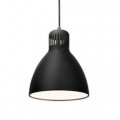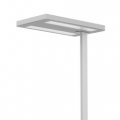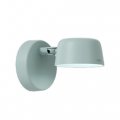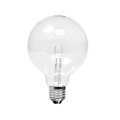Pendant lights: Find the right model for you
Functional and decorative. Light source and eye-catcher. With a pendant luminaire under the ceiling, you can set accents, bring work and dining areas into focus and provide targeted, direct lighting. So let's put our pendant luminaires in the spotlight.
Pendant luminaires: What makes them stand out? What is there to consider?
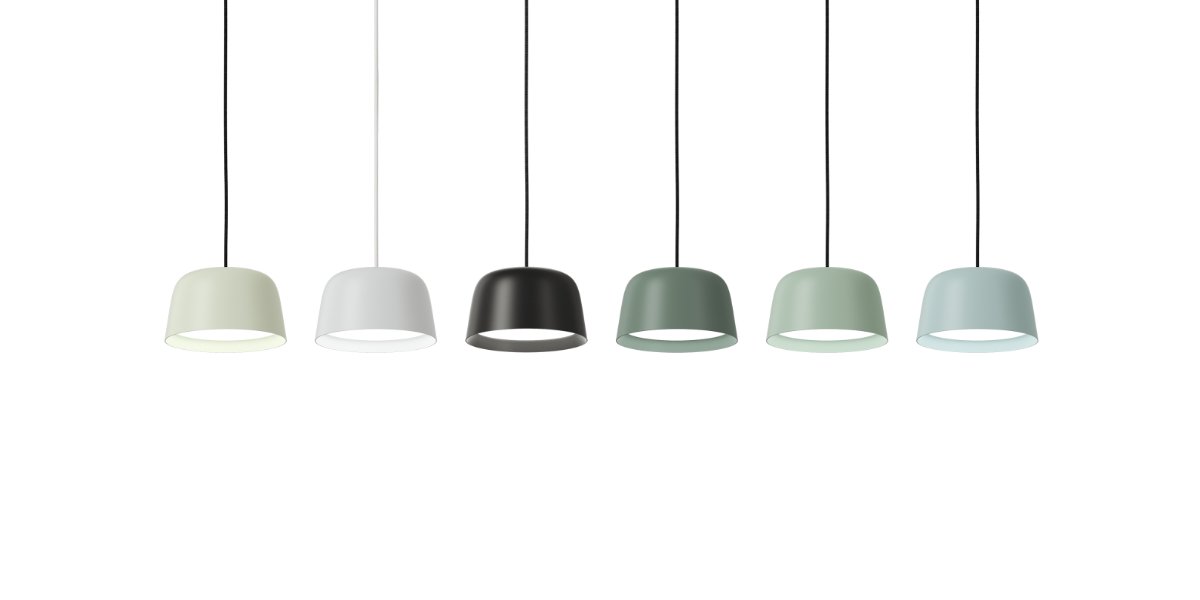
Pendant luminaires - colloquially also called hanging lamps - belong to the family of ceiling luminaires. In contrast to their recessed and surface-mounted relatives, however, they hang freely in the room as a suspended variant. Often placed in the centre of the room, they attract attention with direct light accents and luminaire designs in a wide variety of styles.
No matter whether you like a model in Scandinavian design like our Motus Pendant or you prefer the industrial charm of the Glamox C77-P: When choosing a pendant luminaire, it is always advisable to consider the size of the room. For a harmonious overall picture, it is advisable to choose a model with a large lampshade or a multi-flame version if you have more than a certain square metre. Alternatively, you can hang several small single-lamp pendant luminaires in a row or as a group. If you match the shape of the luminaires to the area they are to illuminate, you will achieve a visually balanced effect. If you need extra flexibility, height-adjustable models are sure to suit your taste. They keep the illuminated area variable.
Practical tip: Before choosing a pendant lamp, take a close look at the structural requirements of the ceiling. If you know whether wood, plasterboard or concrete will form the basis of your mounting, you can optimally match screws and dowels and securely mount the pendant lamp.
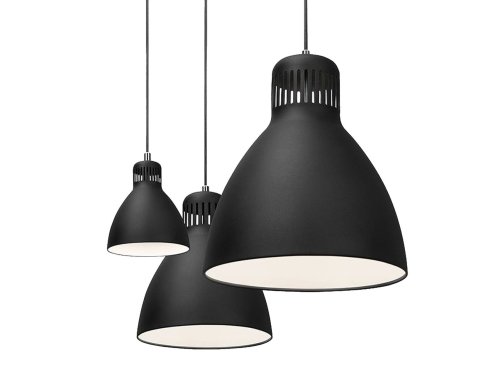
Direct or indirect light?
To plan the lighting concept of a room and thus also the use of pendant luminaires, it is important to first deal with the terms direct and indirect lighting.
Direct light has a smaller beam angle. It brings individual areas into focus and creates a striking light-shadow contrast. It makes sense whenever the need for precisely positioned brightness is particularly great, e.g. at desks or workbenches.
Indirect light has a larger beam angle and is initially reflected by walls, furniture or the ceiling. It creates a diffuse basic brightness without harsh contrasts and glare. Especially when you work in a concentrated manner over a longer period of time, this helps you to prevent headaches and eye strain.

Direct and indirect light in combination!
With regard to the selection of a pendant luminaire, it can be stated that classic models provide direct light. Their shade directs the brightness in a certain direction and thus provides accent lighting. With it, you can create an intimate and cosy atmosphere at the dining table or provide the work surface with targeted light.
But models like our Glamox C77-P pendant luminaire can do even more. They combine direct and indirect light. This makes them ideal lamps above your workplace. The models have reflectors and diffusers that ensure better light diffusion and glare-free lighting.
Good to know: Suspended luminaires with an opaque shade are less dazzling than translucent ones. Diffuse covers and recessed light sources also have a positive effect and counteract glare.
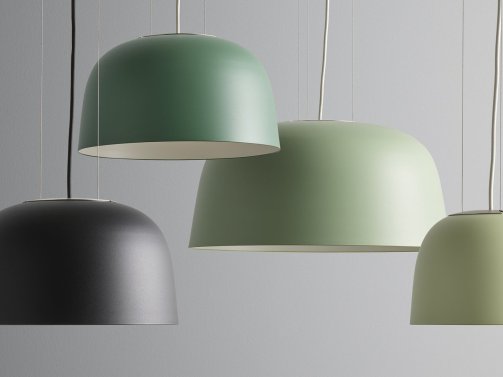
Pendant luminaires above the dining table
Pendant luminaires above the dining table create a cosy atmosphere and bring light to shared meals, cheerful get-togethers and boisterous game nights. No wonder, then, that hardly any dining table can do without them.
To ensure that none of the participants sits in the dark during the get-togethers, it is advisable to choose a sufficiently large dining table lamp that illuminates all seats or to combine several models for this purpose. Depending on your personal taste, the shades can be at the same height or arranged in steps. With pendant luminaires in a row, you achieve a more official effect; combined in a group, they lend your lighting a charming and homely aura. Here, too, it is a good idea to match the shape of the lamp to the shape of the table. Round table, round lamp. Long table, linear lamp. If possible, the models should be slightly shorter than the tabletop so that none of your guests bumps their heads when standing up. The height of the luminaire is also decisive in this context.
Practical tips: A distance of about 60 to 80 cm from the tabletop to the lower edge of the luminaire is recommended. Sitting upright, you can enjoy a clear view. When standing, your pendant luminaire is at about eye level.
If you have a glass table, we recommend a pendant luminaire with indirect light distribution. This way, you can avoid disturbing reflections.
With additional room lighting, you can ensure that the contrasts between light and dark are not too great and that your eyes do not get strained. For extra cosiness, you can add additional mood lighting to your dining table lamps.
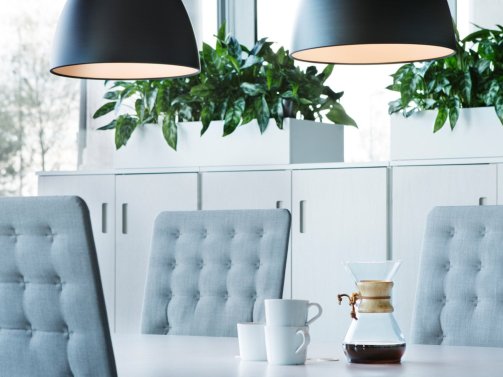
Pendant luminaires at the workplace
Pendant luminaires not only provide light above the reception desk, meeting or conference table: they also offer you the ideal conditions for concentrated and focused work at your desk. Suspended luminaires provide your workplace with targeted brightness. Because they usually hang higher than above the dining table, they usually illuminate far more than your personal work zone.
While with classic task luminaires you should pay attention to the side from which they cast the light onto your desk, with pendant luminaires you can be sure that the light comes directly from above. This guarantees that no disturbing shadows are created. Models with louvres or diffusers also counteract glare.
Important: The desk should not form an illuminated island in the office. If the difference in light from the rest of the room is too great, it unnecessarily strains the eyes. Models such as our Glamox C77-P pendant luminaires counteract this by providing your workplace with direct and indirect light at the same time. Alternatively, you can also add additional floor or wall luminaires.
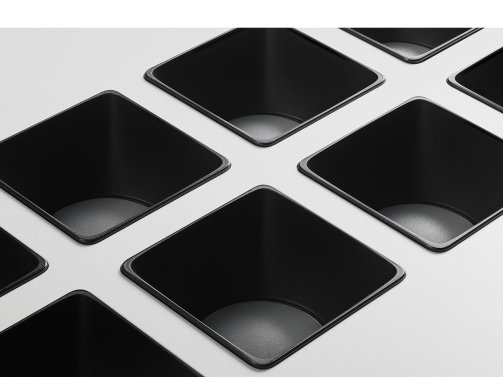
How bright should it be?
Demanding tasks that require a lot of concentration naturally call for more brightness. At the desk, pendant luminaires should provide an illuminance of at least 500, preferably 1000 lux. At the dining table, a cosy 200 lux is sufficient. You can make things particularly easy for yourself if the pendant lamp of your choice, such as our Glamox C77-P, has a dimmer and you can spontaneously adjust the brightness to your liking at any time.
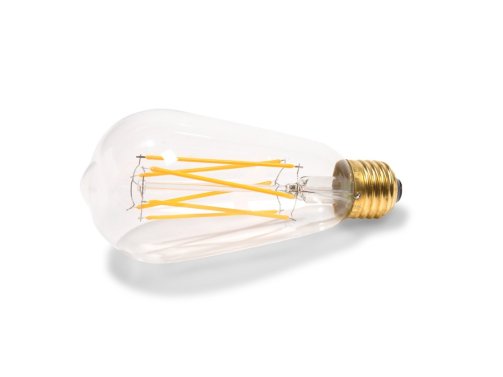
What makes the pendant light shine?
Our pendant luminaires are equipped with energy-efficient LEDs. Depending on the model, they offer you a colour temperature between 3,000 and 4,000 Kelvin and thus provide warm to neutral white light. With values around >80 Ra, their colour rendering is in a range that makes the illuminated objects look natural.
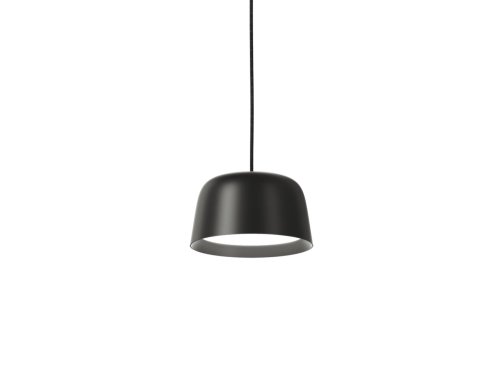
DALI (Digital Addressable Lighting Interface) - digital lighting control
Would you like to control the lighting in your dining room or office automatically? Our SVA pendant luminaire and also the Motus Pendant model have a DALI interface. Via this system, you can select the components of a lighting system either individually or combined in groups and regulate e.g. the intensity or colour temperature as well as switch the luminaires on and off. This offers you not only extra comfort but also extra flexibility and the automatic adjustments enable you to save energy.
Become a luminaire designer yourself!
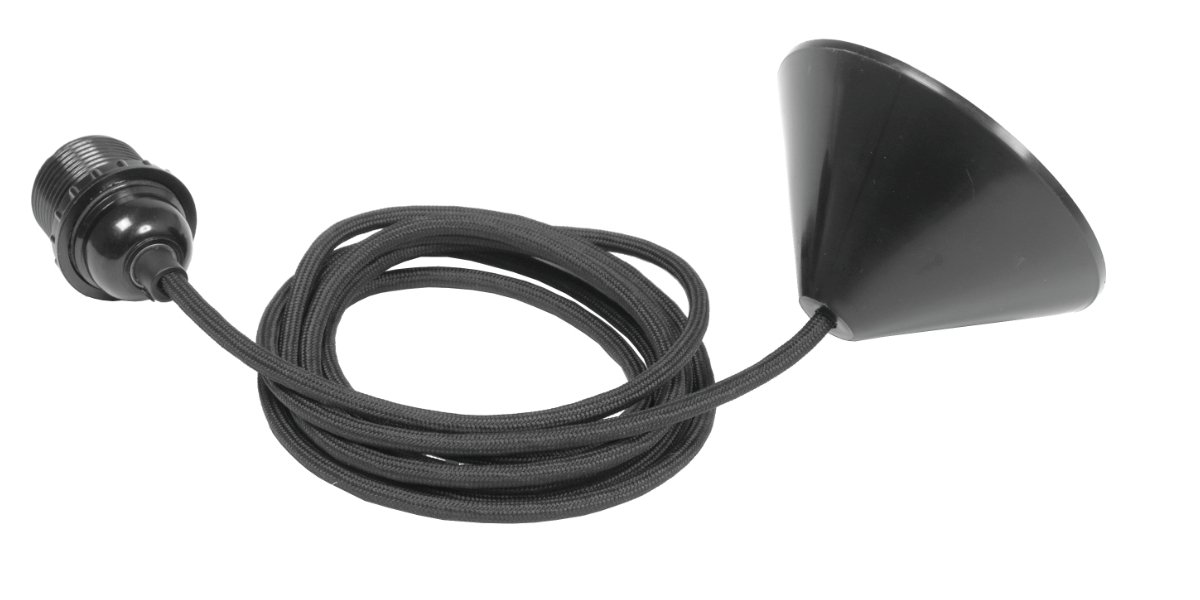
Do you want to design a pendant lamp according to your personal ideas? In our category lamp assembly you will find everything you need to create an individual design, from pendants to accessories for decorative lampshades.

